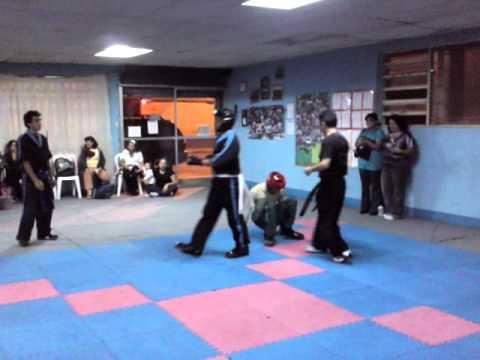“Knowledge and understanding” is how a Polynesian combat form called Limalama has been defined as. This “hybrid” martial art form is said to have originated from Samoa, and was developed by Tu’umamao “Tino” Tuiolosega. Apparently, the term Limalama when literally translated means “hand of wisdom”. Furthermore, this style of combat essentially is a “self-defense” system that comprises of circular dance like movements. In addition, about 60% of this combat style is based on hand techniques.
a. History/origin of the Limalama:
According to the cultural history of Samao, the Limalama was developed by Tu’umamao “Tino” Tuiolosega. Apparently, while growing up Tuiolosega was taught Polynesian dance movements by his father and uncle. Now some of these dance movements that were taught also comprised of “striking techniques”. It was thus in the mid 1950’s using elements of dance and striking technique that Tuiolosega developed his own unique martial art form which was eventually named “Limalama” which when translated literally means “hand of wisdom”. Furthermore, he introduced this martial art form in Hawaii, and gradually even opened up schools teaching this combat style in California in the United States of America.
b. Weapon used in the Limalama:
The weapon mainly used in this form of combat includes the “knife and stick”. In addition, the “hands and feet” of the fighter are also used as a weapon.
c. Technique involved in the Limalama and training availability:
In terms of technique, the Limalama comprises of a number of them and they are as follows:
- Afikau: Technique related to dance movements.
- Amofoe: Technique related to balance and weight manipulation.
- Fa’aelise: Technique related to physical movement and coordination.
- Fa’ako’elau: Technique related to “grappling” moves i.e. wrestling.
- Faufusu: Technique related to “hand striking”.
- Lua’aga: Technique related to pressure points manipulation.
- Milosia: Technique related to circular movements.
- Pepelu ma Pega: Technique related to the use of knife.
- Uma Ma Kaupi’I: Technique related to the holds and takedowns.
- Vaeka ma Kavae: Technique related to the use of kicks.
- Ti’apega ma Lo’u: Technique related to the use of sticks.
- Upaga ma Lo’ulo’uga: Technique related to the use of traps and locks.
As for training centers/schools, there are a few available especially in the United States of America for those interested in learning this “hybrid” martial art form.
image credit ')}







